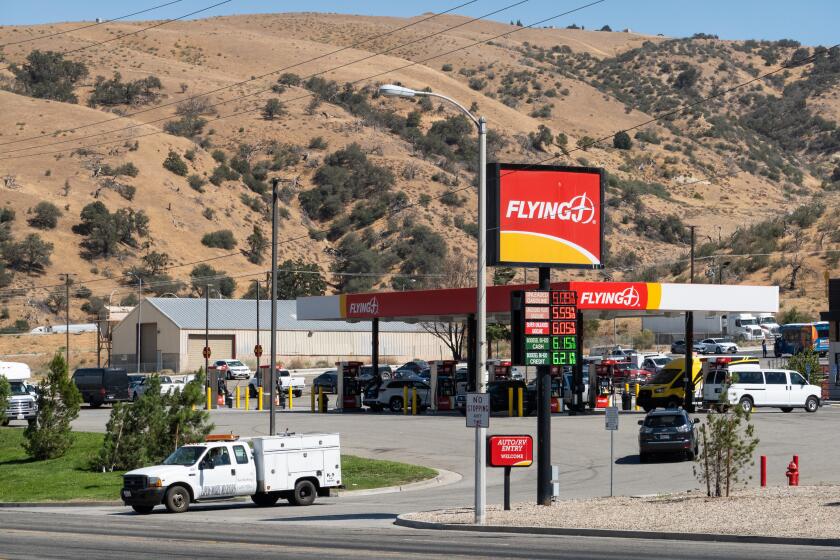MWD approves bailout of troubled water museum
- Share via
At the same meeting in which they debated raising wholesale water rates, directors of the Metropolitan Water District of Southern California agreed Tuesday to spend $4.67 million to keep a financially troubled water museum afloat.
The bailout was on top of $16 million in ratepayer money that the agency previously allocated to the Hemet-based Center for Water Education, which was on the verge of bankruptcy even before officially opening.
For the record:
12:00 a.m. Feb. 16, 2007 For The Record
Los Angeles Times Friday February 16, 2007 Home Edition Main News Part A Page 2 National Desk 1 inches; 50 words Type of Material: Correction
Metropolitan Water District: An article in Wednesday’s California section about the Metropolitan Water District’s decision to pay the debts of a nonprofit water museum it helped finance in Hemet said the board had 42 members. It has 37. The same error also appeared in a related article on Jan. 27.
The center, which is part museum, part educational facility, was conceived by MWD officials in 2001 to tell “the story of water” and educate the public on management and conservation issues.
“These actions continue to demonstrate our interest and role in educating the public about the history and importance of one of the region’s most precious natural resources -- water,” Metropolitan board Chairman Timothy F. Brick of Pasadena said in a statement.
The main force behind the project has been Phillip J. Pace, a former board chairman who still serves as an MWD director and representative of a water agency in Carson. He is also the chairman of the nonprofit organization established to run the Center for Water Education.
“I think it’s a win-win situation,” Pace said after the vote. “This is going to benefit the community.”
The MWD board has 42 members, but not all were in attendance Tuesday. The bailout plan passed 24 to 5, with two abstentions. Pace voted for the bailout.
Although several directors expressed concern about the project, others said the bailout was necessary to protect the MWD’s earlier investment. If they didn’t help out, creditors probably would have sued the center and the MWD, the agency’s lawyers said. Some contractors have already filed liens, saying that they haven’t been paid.
“Ultimately, we believe a self-sufficient water education and research facility continues to have potential at the Diamond Valley Lake complex,” said Director Marcie Edwards, who helped draft the bailout plan. “But at this point, we need to take immediate action to ensure Metropolitan’s significant public investment is protected.” Edwards represents the city of Anaheim.
Not all the directors agreed that the museum merited such a sizable investment, especially at a time when the agency is facing dry weather conditions and plans to raise water rates. The MWD provides drinking water to 18 million people in six Southern California counties by selling to water district retailers.
Director James H. Bond, one of the five who voted against the bailout, said he fears that the center may become a financial liability for years.
“I don’t see what I would call a good exit strategy,” said Bond, a representative of the San Diego County Water Authority. “It’s a considerable drain on our resources.”
And, Bond said, it comes at a bad time.
After voting to spend money on the museum, the board proposed raising wholesale water rates in January by $30 an acre-foot. A public hearing on the increase is scheduled for next month. If approved, ratepayers would probably see an increase of 70 cents to $1.25 in their monthly bills.
“That’s adding insult to injury when you essentially misspend millions of dollars at the same time you’re asking ratepayers for a rate increase,” said Jon Coupal, president of the Howard Jarvis Taxpayers Assn. “This is not going to engender a lot of goodwill toward the district.”
As part of the museum bailout, the MWD essentially takes over the water center. Because the building is on MWD land, the board terminated its ground lease with the center and will take possession of the facility. The board said it would look for a new partner to develop a “self-sustaining center that does not place extensive financial burdens on Metropolitan and its ratepayers.”
The museum’s financial problems, officials said, were caused by unexpected cost increases in construction materials. Fundraising efforts also fell short of expectations, they said.
The center, which is located near the Diamond Valley Reservoir in a remote area of Riverside County, is more than a year behind schedule. Most of the construction, however, has been completed. Although some members of the public were admitted during a “soft opening” in November, the facility isn’t expected to have its grand opening until next fall.
*
More to Read
Sign up for Essential California
The most important California stories and recommendations in your inbox every morning.
You may occasionally receive promotional content from the Los Angeles Times.













